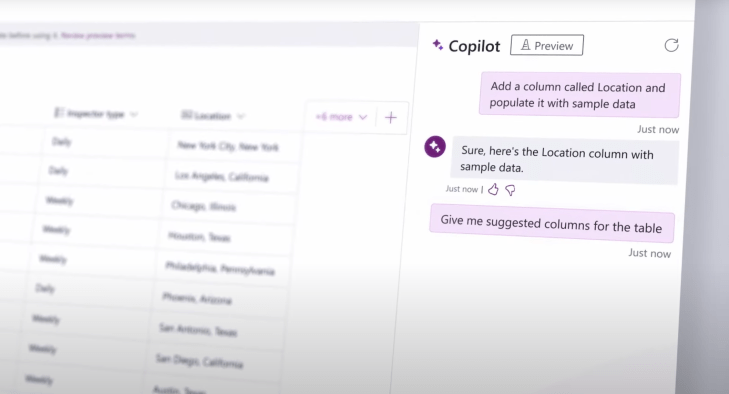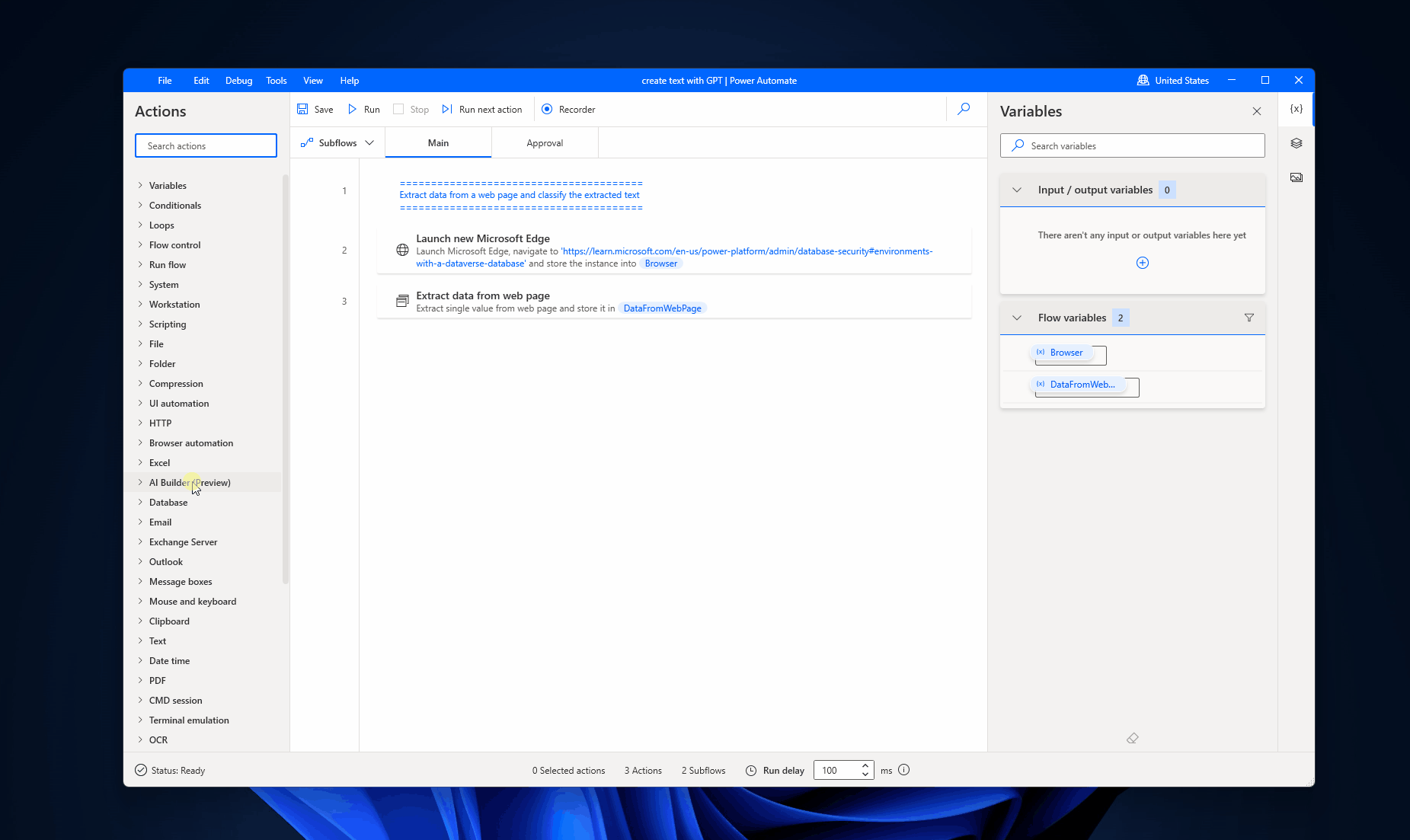At its virtual “Future of Work” event, Microsoft today announced the launch of an AI copilot — and make no mistake, Microsoft is all-in on using this “copilot” metaphor across all of its products — to Power Apps, Power Virtual Agents and Power Automate. The idea here is to use AI to make using these tools for building line-of-business apps, flows and bots even easier by letting users use natural language to describe what they want to build.
“With Copilot, Microsoft Power Platform is bringing AI-powered assistance into Power Apps, Power Virtual Agents, and Power Automate,” Charles Lamanna, Microsoft’s corporate VP for its low code application platform, writes in today’s announcement. “Makers now have a live in-studio copilot that helps them build solutions and provides suggestions for improvement. To build an app, flow, or bot, you can describe it using natural language and copilot can build it in seconds. It is that easy.”
At its core, this works a bit like using the new Bing or ChatGPT. You tell the Power Platform Copilot what you want and then refine these ideas through a back-and-forth with the bot in the chat sidebar.
In Power Apps, the main low-code tool of the Power Platform, users can now use sentences like “Create a time and expense application to enable my employees to submit their time and expense reports” and it will generate this app for them. But in addition to building these user interfaces and integrations with a company’s data sources, the Copilot can also help users analyze their data and visualize it (Microsoft’s example here is: “What are the most common reasons an inspection fails?”)
Given that Power Virtual Agents is part of the same platform and getting similar updates, it’s maybe no surprise that it’s now also more deeply integrated into Power Apps, allowing these developers to more easily add a chat bot to their apps.
Power Automate, Microsoft’s tool for automating workflows, the process is pretty much the same and the company argues that during its preview, customers saw a 50% reduction in the time it took to develop a Power Automate workflow.
One nifty feature worth calling out here is that because the service is integrated with a GPT model, users will now be able to use Power Automate to also automatically generate text or have the tool summarize existing documents.
For now, Microsoft describes these features as “experimental previews powered by Azure OpenAI Service with GPT” and warns that they are not meant for production use. That’s unlikely to stop most users from using them in production, but at least Microsoft can say that it warned people when their automated daily content update goes haywire.

